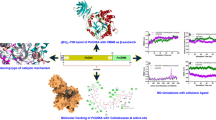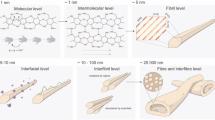Abstract
The 2,3,6-trinitro-β-d-glucopyranose as a monomer of nitrocellulose in the 4C1 chair conformation was selected for the alkaline hydrolysis of nitrocellulose within SN2 framework in the gas phase and in the bulk water solution. Both the direct and angular attacks of OH− in the hydrolysis reactions were considered. Geometries were optimized at the B3LYP/6-311G(d,p) level both in the gas phase and in bulk water solution. Effect of bulk water solution was modeled using the PCM approach. Nature of potential energy surfaces of the local minima and transition states was ascertained through harmonic vibrational frequency analysis. Intrinsic reaction coordinate calculations were also performed to validate the computed transition state structures. Effect of electron correlation on computed energies was considered at the MP2/cc-pVTZ//B3LYP/6-311G(d,p) level. It was found that the angular attack of OH− in the hydrolysis reaction will require significantly larger activation energy than the direct attack. Computed transition states correspond to the structure where the presence of hydrogen bonds between the OH− and various sites of nitrocellulose was the necessary stabilizing factor. The ring breaking through the C–O ring bond was not found to be the first step in the alkaline hydrolysis reactions. It was predicted that alkaline hydrolysis would be driven by the addition–elimination (substitution) reaction starting at the C3 site and will progress in the C2 → C6 direction. Entropy of system in water solution will have profound effect on alkaline hydrolysis reaction of nitrocellulose.






Similar content being viewed by others
References
Bowden FP, Yoffe AD (1952) Initiation and growth of explosion in liquids and solids. Cambridge University Press, Cambridge
Tarver CM, Chidester SK, Nichols AL III (1996) J Phys Chem 100:5794
Fried LE, Ruggiero AJ (1994) J Phys Chem 98:9786
Cao C, Gao S (2007) J Phys Chem B 111:12399
Owens FJ, Jayasurya K, Abrahmsen L, Politzer P (1985) Chem Phys Lett 116:434
Politzer P, Alper HE (1999) In: Leszczynski J (ed) Computational chemistry: reviews of current trends, vol 4. World Scientific Publishing Co., River Edge, NJ, pp 271–286
Song XS, Cheng XL, Yang XD, He B (2006) Propellants Explos Pyrotech 31:306
Zeman S (2003) Materials. In: Politzer P, Murray JS (eds) Energetic materials, vol 2. Elsevier, Amsterdam, pp 25–52
Kamlet MJ, Adolph HG (1979) Propellants Explos Pyrotech 4:30–31
Christodoulatos C, Su T-L, Koutsospyros A (2001) Water Environ Res 73:185
Katoh K, Ito S, Kawaguchi S, Higashi E, Nakano K, Ogata Y, Wada Y (2010) J Therm Anal Calorim 100:303
Jenkins TF, Pennington JC, Ampleman G, Thiboutot S, Walsh MR, Diaz E, Dontsova KM, Hewitt AD, Walsh ME, Bigl SR, Taylor S, MacMillan DK, Clausen JL, Lambert D, Perron NM, Lapointe MC, Brochu S, Brassard M, Stowe R, Farinaccio R, Gagnon A, Marois A, Gilbert D, Faucher D, Yost S, Hayes C, Ramsey CA, Rachow RJ, Zufelt JE, Collins CM, Gelvin AB, Saari SP (2007) Characterization and Fate of Gun and Rocket Propellant Residues on Testing and Training Ranges: Interim Report 1, ERDC TR-07-1, U.S. Army Engineer Research and Development Center, Vicksburg, MS, USA
Mirecki JE, Porter B, Weiss Jr CA (2006) Environmental Transport and Fate Process Descriptors for Propellant Compounds, ERDC/EL TR-06-7, US Army Engineer Research and Development Center, Vicksburg, MS, USA
Hewitt AD, Bigl SR (2005) Elution of Energetic Compounds from Propellant and Composition B Residues, ERDC/CREL TR-05-13, US Army Engineer Research and Development Center, CREL, Hanover, NH, USA
Pavasars I, Hagberg J, Boren H, Allard B (2003) J Polym Environ 11:39
Van Loon LR, Glaus MA, Laube A, Stallone S (1999) J Environ Polym Degrad 7:41
Van Loon RL, Glaus MA (1997) J Environ Polym Degrad 5:97
Glaus MA, Van Loon LR (2008) Environ Sci Technol 42:2906
Huwei L, Ruonong F (1988) J Anal Appl Pyrol 14:163
Makashir PS, Mahajan RR, Agrawal JP (1995) J Therm Anal 45:501
Petrova OE, Tarasova NB, Davydova MN (2010) World J Microbiol Biotechnol 26:189
Hon DNS, Gui TL (1986) Polym Photochem 7:299
Yang M, Ramsey JM, Kim BJ (1996) Rapid Commun Mass Spectrom 10:311
Wendt TM, Kaplan AM (1976) J Water Pollut Control Fed 48:660
Appell M, Strati G, Willett JL, Momany FA (2004) Carbohydr Res 339:537
Tomasi J, Mennucci B, Cammi R (2005) Chem Rev 105:2999
Frisch MJ, Trucks GW, Schlegel HB, Scuseria GE, Robb MA, Cheeseman JR, Scalmani G, Barone V, Mennucci B, Petersson GA, Nakatsuji H, Caricato M, Li X, Hratchian HP, Izmaylov AF, Bloino J, Zheng G, Sonnenberg JL, Hada M, Ehara M, Toyota K, Fukuda R, Hasegawa J, Ishida M, Nakajima T, Honda Y, Kitao O, Nakai H, Vreven T, Montgomery JA Jr, Peralta JE, Ogliaro F, Bearpark M, Heyd JJ, Brothers E, Kudin KN, Staroverov VN, Kobayashi R, Normand J, Raghavachari K, Rendell A, Burant JC, Iyengar SS, Tomasi J, Cossi M, Rega N, Millam JM, Klene M, Knox JE, Cross JB, Bakken V, Adamo C, Jaramillo J, Gomperts R, Stratmann RE, Yazyev O, Austin AJ, Cammi R, Pomelli C, Ochterski JW, Martin RL, Morokuma K, Zakrzewski VG, Voth GA, Salvador P, Dannenberg JJ, Dapprich S, Daniels AD, Farkas O, Foresman JB, Ortiz JV, Cioslowski J, Fox DJ (2009) Gaussian 09. Revision A.1. Gaussian, Inc., Wallingford, CT
Frisch MJ, Trucks GW, Schlegel HB, Scuseria GE, Robb MA, Cheeseman JR, Montgomery JA Jr, Vreven T, Kudin KN, Burant JC, Millam JM, Iyengar SS, Tomasi J, Barone V, Mennucci B, Cossi M, Scalmani G, Rega N, Petersson G A, Nakatsuji H, Hada M, Ehara M, Toyota K, Fukuda R, Hasegawa J, Ishida M, Nakajima T, Honda Y, Kitao O, Nakai H, Klene M, Li X, Knox JE, Hratchian HP, Cross JB, Bakken V, Adamo C, Jaramillo J, Gomperts R, Stratmann RE, Yazyev O, Austin AJ, Cammi R, Pomelli C, Ochterski JW, Ayala PY, Morokuma K, Voth GA, Salvador P, Dannenberg JJ, Zakrzewski VG, Dapprich S, Daniels AD, Strain MC, Farkas O, Malick DK, Rabuck AD, Raghavachari K, Foresman JB, Ortiz JV, Cui Q, Baboul AG, Clifford S, Cioslowski J, Stefanov BB, Liu G, Liashenko A, Piskorz P, Komaromi I, Martin RL, Fox DJ, Keith T, Al-Laham MA, Peng CY, Nanayakkara A, Challacombe M, Gill PMW, Johnson B, Chen W, Wong MW, Gonzalez C, Pople JA, Gaussian 03 (2004) Revision E01. Gaussian, Inc., Wallingford CT
Dyguda-Kazimierowicz E, Sokalski WA, Leszczynski J (2008) J Phys Chem B 112:9982
Garg R, Grasso D, Hoag G (1991) Hazard Waste Hazard Mater 8:319
Quivey DM, Aleman JE, Kim BJ (1994) In: 49th Purdue Industrial Waste Conference Proceedings, Lewis Publishers, Chelsea, MI
Acknowledgments
The use of trade, product, or firm names in this report is for descriptive purposes only and does not imply endorsement by the U.S. Government. The tests described and the resulting data presented herein, unless otherwise noted, were obtained from research conducted under the Environmental Quality Technology Program of the United States Army Corps of Engineers and the Environmental Security Technology Certification Program of the Department of Defense by the USAERDC. Permission was granted by the Chief of Engineers to publish this information. The findings of this report are not to be construed as an official Department of the Army position unless so designated by other authorized documents. The authors thank Dr. Andrea Scott and Dr. Anthony Bednar of the USACE for their editorial comments.
Author information
Authors and Affiliations
Corresponding author
Electronic supplementary material
Below is the link to the electronic supplementary material.
Rights and permissions
About this article
Cite this article
Shukla, M.K., Hill, F. Theoretical investigation of reaction mechanisms of alkaline hydrolysis of 2,3,6-trinitro-β-d-glucopyranose as a monomer of nitrocellulose. Struct Chem 23, 1905–1920 (2012). https://doi.org/10.1007/s11224-012-9977-2
Received:
Accepted:
Published:
Issue Date:
DOI: https://doi.org/10.1007/s11224-012-9977-2




